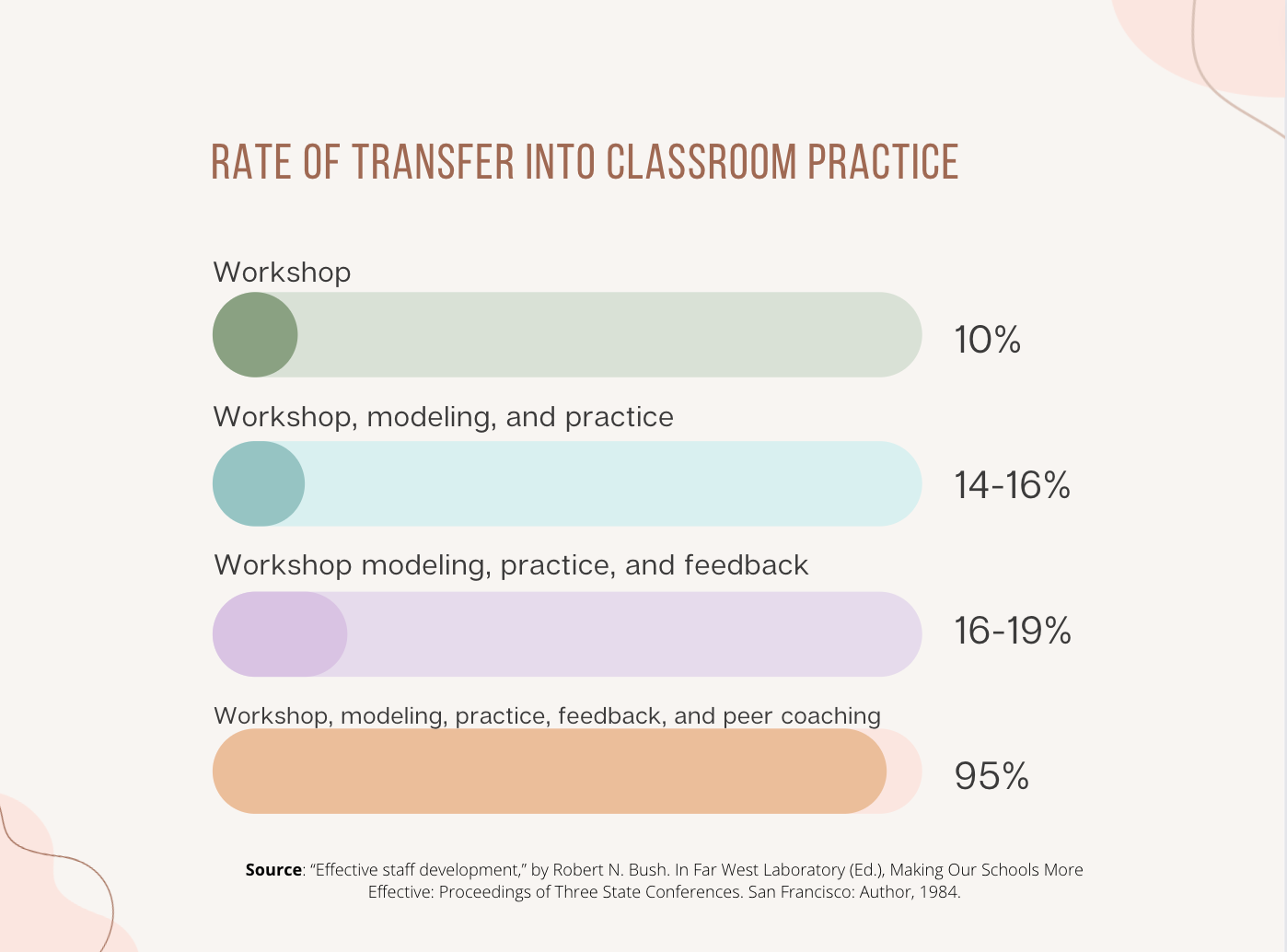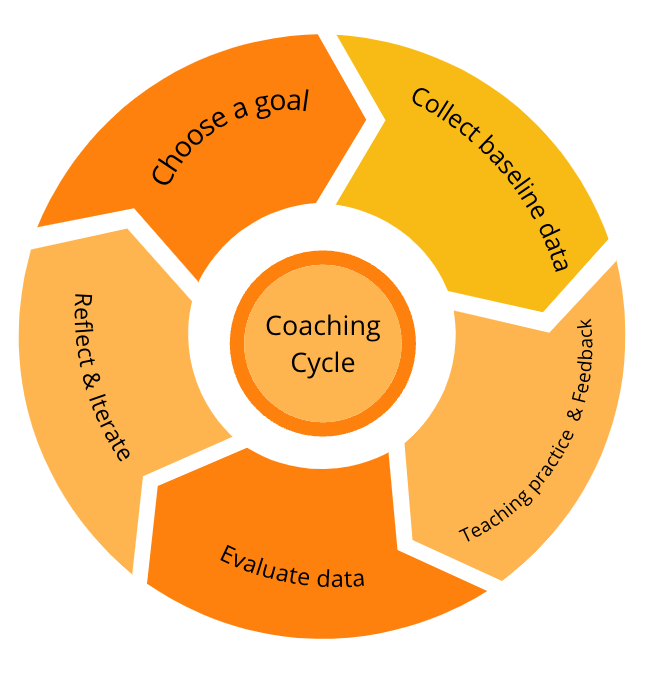
Instructional coaching is one of the most powerful ways to impact teacher practice. But according to educational scholars Bruce Joyce and Beverly Showers, only 20% of teachers who participate in out of context professional development actually implement those strategies within their daily practice. Comparatively, when coaching is paired with professional development, adoption of these new instructional practices rises 80-90%.

In this article, we’ll focus on how to use Coaching Cycles to help mature your instructional coaching practice with your teachers.
Coaching Cycles are a flexible framework to organize the collaborative coaching practice between a coach and a teacher. An alternative way to view Coaching Cycles is a comprehensive feedback loop between the teacher, the coach, and the students.
In traditional coaching, a coach will observe the classroom and provide feedback. Coaches may use 1:1 meetings with teachers as a way to share resources for lessons teachers are preparing or help problem-solve issues teachers are seeing within their classes. The goal of the traditional coaching model is supporting teachers so they can do their job with fewer obstacles.
However, with traditional coaching, little emphasis is placed on systematically helping teachers grow. Professional development may be curated based on common opportunities coaches are observing within classrooms, yet no work is done to encourage the implementation and growth of these practices after professional development.
For example, incorporating student choice may be the focus for a professional development session — but there is no followup to ensure teachers are incorporating this best practice within their day-to-day lesson plans.
Coaching Cycles structure teacher growth into a scientific practice:

Coaching Cycles allow a teacher a duration of time to experiment with growing a specific teaching skill or strategy. The measure of success for a teacher in a coaching cycle is: did I move the needle for improving student learning in my classroom? The goal of Coaching Cycles, however, is to improve instructional practices so that student learning is impacted beyond the conclusion of a coaching cycle.
Before you start building out Coaching Cycles, ensure that the coaching cycle framework you build is in line with the larger goals for your coaching program. By building out the high-level goals and desired outcomes, you can use Coaching Cycles as a way to collect data that measures your progress on achieving those goals.
Coaching Cycles aren’t focused just on teacher growth; they help coaches grow in their practice as well. Collecting coaching data helps ensure that coaching time is spent equitably across content areas, buildings, and grade levels, and that the support provided is high-impact and promoting teacher growth.

Bringing building leadership and teachers together to define what good instruction looks like helps align the district and school on what teachers and coaches should be working together to achieve.

Coaches don’t just coach in a vacuum — they need structure too! Providing specific goals that teachers should be working towards gives coaches an understanding of the district vision, and a practical idea of how to help teachers get there. The coach and the teacher can then collaboratively work together to achieve this goal within teachers’ classrooms.


Like many complex instructional practices, it’s smart to start small. One of the best instructional practices we can encourage within teachers is the art of reflecting on their work and iterating based on student data.
Start your coaching cycle with a simple goal setting exercise and conclude the coaching cycle with a teacher and coach reflection.

After your coach and teacher have created a routine with goal setting and reflection, add in additional routines to your coaching cycle such as analyzing student data, co-teaching, co-planning, and classroom visits.
Growth is a practice of constant reflection and iteration; establishing your coaching cycle framework isn’t much different. Start small with a goal in mind and, as your teachers and coaches mature in their practice together, expand to add best practices for Coaching Cycles and you’ll start to see continuous growth of your coaches, teachers, and ultimately your students.
Ready to get started? Make implementing coaching cycles for your district a snap with KickUp — schedule a demo today.
Resources:
Schedule a demo with one of our friendly team members.